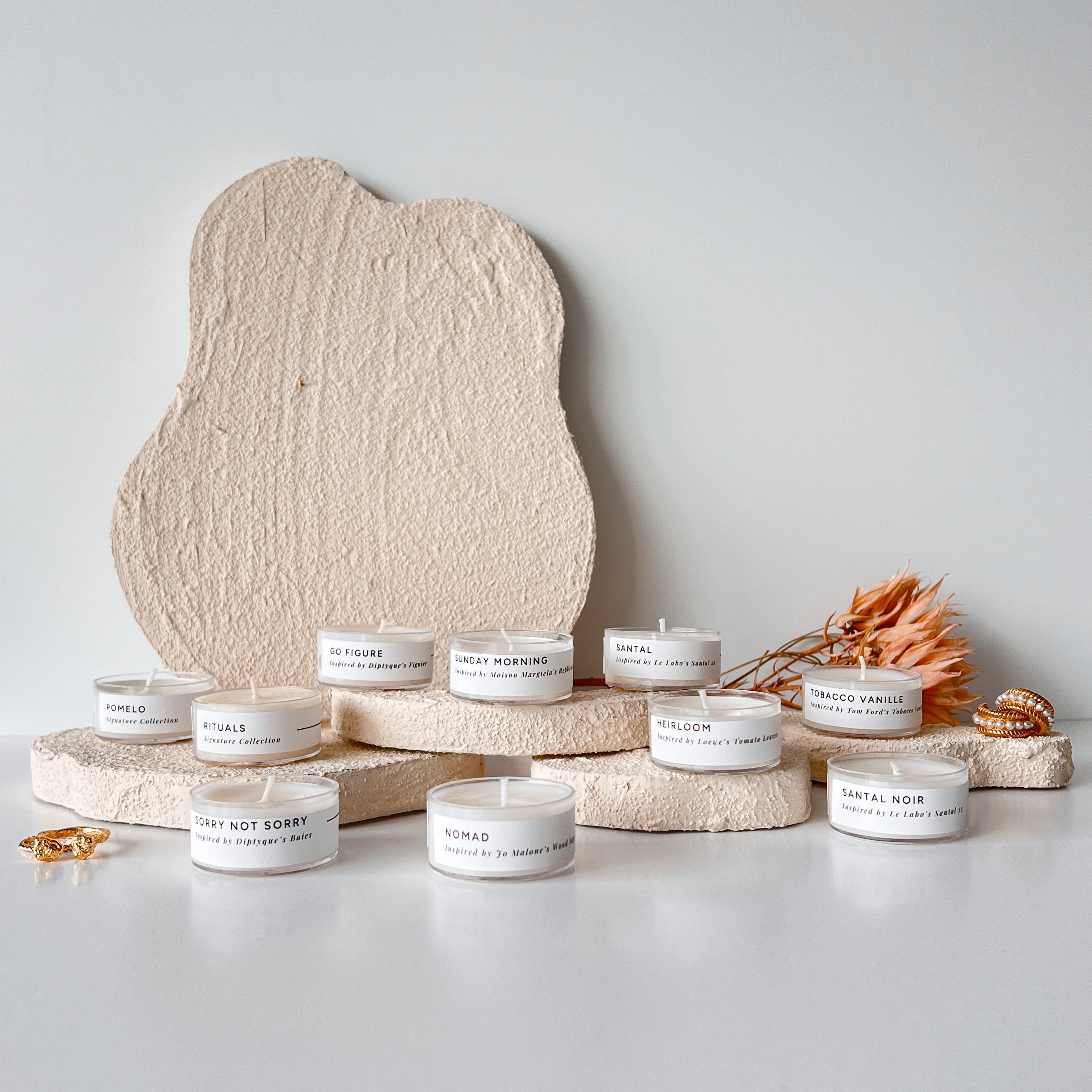
Wick Trimming 101
Ever wondered why your candle is burning unevenly or leaving black soot around the jar? The secret lies in one tiny but mighty component: the wick.
While it might seem like a minor detail, trimming your wick is essential for getting the most out of your candles. In this article, we'll dive into the history of wicks, explore the different types, and explain why trimming your wick is key to enjoying a cleaner, longer-lasting burn.
A Brief History of Wicks and Their Purpose
Wicks have been around for thousands of years, from ancient oil lamps to modern-day candles. Their purpose is simple: to draw the wax (or oil) up to the flame so the candle can burn steadily.
Early wicks were made from various materials, like reeds, papyrus, and rushes, but today, we use more refined options to suit different waxes and burning preferences.
Different Types of Wicks
If you’ve ever shopped for candles, you know not all wicks are created equal. Here’s a quick rundown of the most common types of wicks you’ll find on the market today:
-
Cotton Wicks: Made from braided or twisted cotton fibers, these are the most common. They provide a steady burn and work well in various wax types.
- Wooden Wicks: Known for their crackling sound, wooden wicks offer a unique sensory experience. They’re often used in natural candles and create a cozy ambiance.
- Hemp Wicks: Popular in eco-friendly candles, hemp wicks are a sustainable option, known for their clean and steady burn.
- Paper-core wicks: These wicks have a cotton exterior with a paper core for added rigidity, often used in larger candles for a stronger flame.
Cotton vs. Wooden Wicks: The Pros and Cons
Two of the most popular wick choices are cotton and wooden. Let’s break down the differences:
- Cotton Wicks
- Pros: Cotton wicks provide a steady, reliable burn and are easy to light. They’re versatile and work well in most candles.
- Cons: If not trimmed regularly, they can “mushroom” at the top, leading to a larger, smokier flame.
- Wooden Wicks
- Pros: They offer a luxurious touch, producing a soft crackling sound that adds to the candle experience.
- Cons: Wooden wicks can be harder to light and may require more maintenance, like trimming or relighting during the burn.
Why You Should Trim Your Wick
Trimming your wick might seem like a small task, but it has huge benefits. Here’s why you should make it a habit:
-
Prolongs the Life of Your Candle: When you trim the wick to around 1/4 inch before each burn, it helps the candle burn more slowly and evenly. This means you’ll get more hours of enjoyment from your candle.
-
Reduces Soot and Smoke: If you’ve ever noticed a black ring of soot on your candle jar, it’s a sign that the wick is too long. Trimming the wick keeps the flame small and controlled, which reduces soot, smoke, and black marks on the jar.
-
Prevents Tunneling: A long, untrimmed wick can cause the candle to burn hotter and faster in the center, creating a tunnel and leaving wasted wax on the sides. Trimming ensures the candle burns evenly, from edge to edge.
-
Enhances Fragrance Throw: When your candle burns correctly, it also helps release the fragrance oils evenly. A trimmed wick can improve the scent throw, allowing you to enjoy the full fragrance potential of your candle.
- Keeps You Safe: A longer wick leads to a larger flame, which can be dangerous if left unattended. A trimmed wick results in a more manageable flame, lowering the risk of overheating or accidents.
Just Trim It!
Trimming your wick is an easy step that can make a world of difference. It prolongs the life of your candle, keeps your space free from soot, and ensures a safe, even burn every time.
So next time you light your candle, grab your wick trimmer (or a pair of scissors) and give it a quick snip—it’s a simple habit that will keep your candles burning brighter and longer.

















